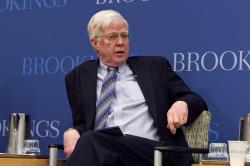INTRODUCTION
Over the past quarter century, American economists and policymakers have been very active in providing policy advice to other countries about how to avoid and/or manage financial crises. In many cases the essence of the advice was ‘you should be more like us.’ Suddenly, the United States has been hit by its own financial crisis – one that is extraordinary in both its breadth and severity. While prior financial panics in individual countries or regions have involved output declines of equal or greater magnitude, the global dimensions of the current crisis are unprecedented. It began in the United States, but has now spread to the furthest limits of the world economy. The transmission channel with Europe has been largely through a linkage of financial markets and institutions on both sides of the Atlantic that shared some of the same flaws and excesses. But for Asia and much of the developing world, the transmission has been largely through an extraordinary collapse of global trade.
This paper summarizes some research on the origins of the crisis, traces the evolution of the credit panic that hit in late 2008, its impact on the real economy, and the extraordinary policy actions that have been taken to mitigate the economic losses. As with past financial crises, the current downturn will end and the economy will recover. However, as we argue below, the crisis is likely to come to represent a major regime change, greatly altering the future shape of the U.S. and global economies. The era of self-regulation of financial institutions is over, and the role of monetary policy has been greatly altered. The binge of consumer spending also seems to have come to an end, as households focus on rebuilding their balance sheets. If the United States is to restore full employment, it must not only rebuild its financial industries but also rejuvenate its export industries and achieve a more balanced external position. This raises two challenges for the rest of the global economy. First, it must develop new drivers of demand growth; countries will not be able to rely on growing exports into the U.S. market, and they will need to emphasize the development of domestic and regional markets. Second, frustration with the effort to develop export markets in a time of slow global growth may push politicians toward a more protectionist policy stance.


